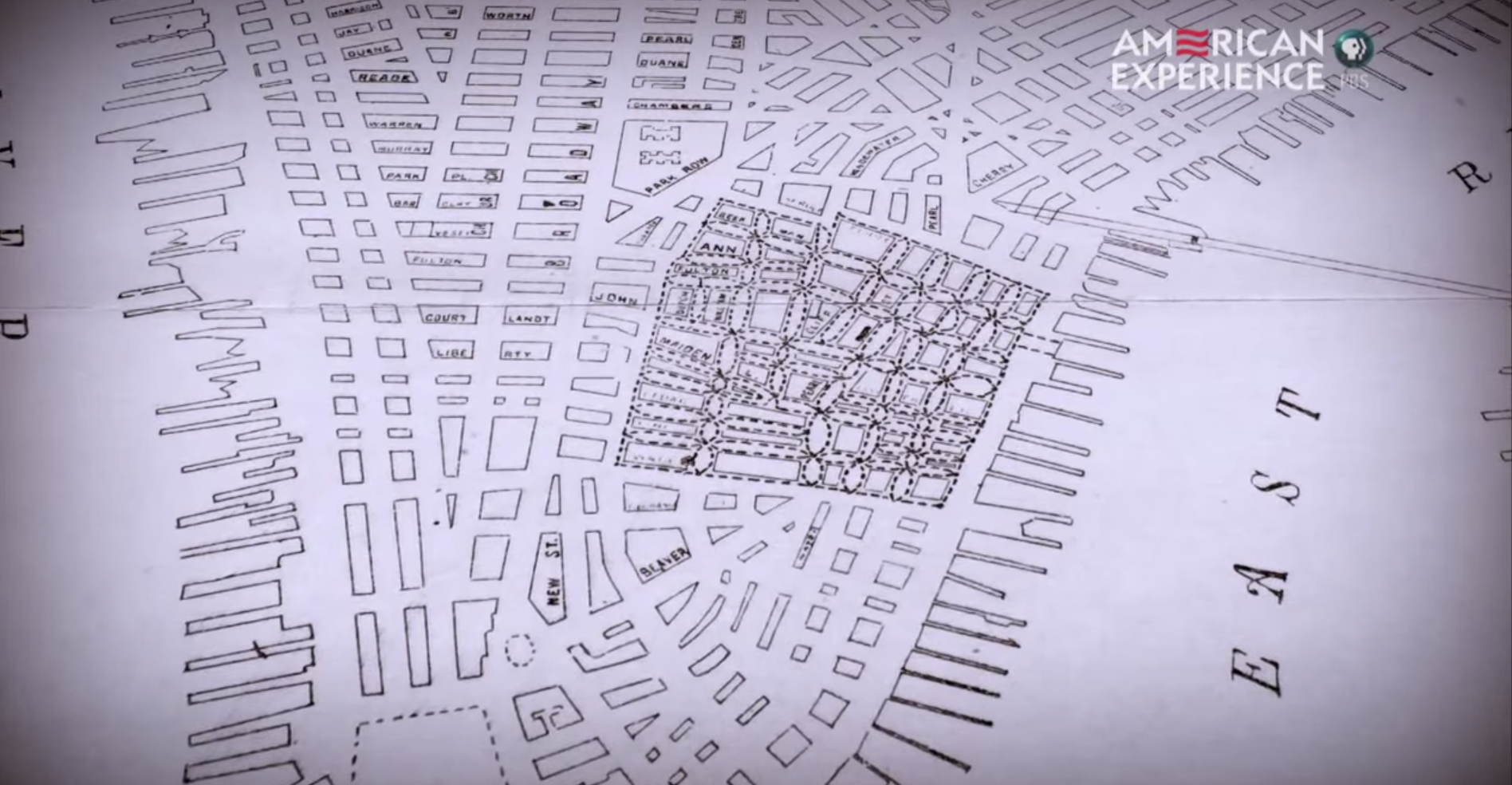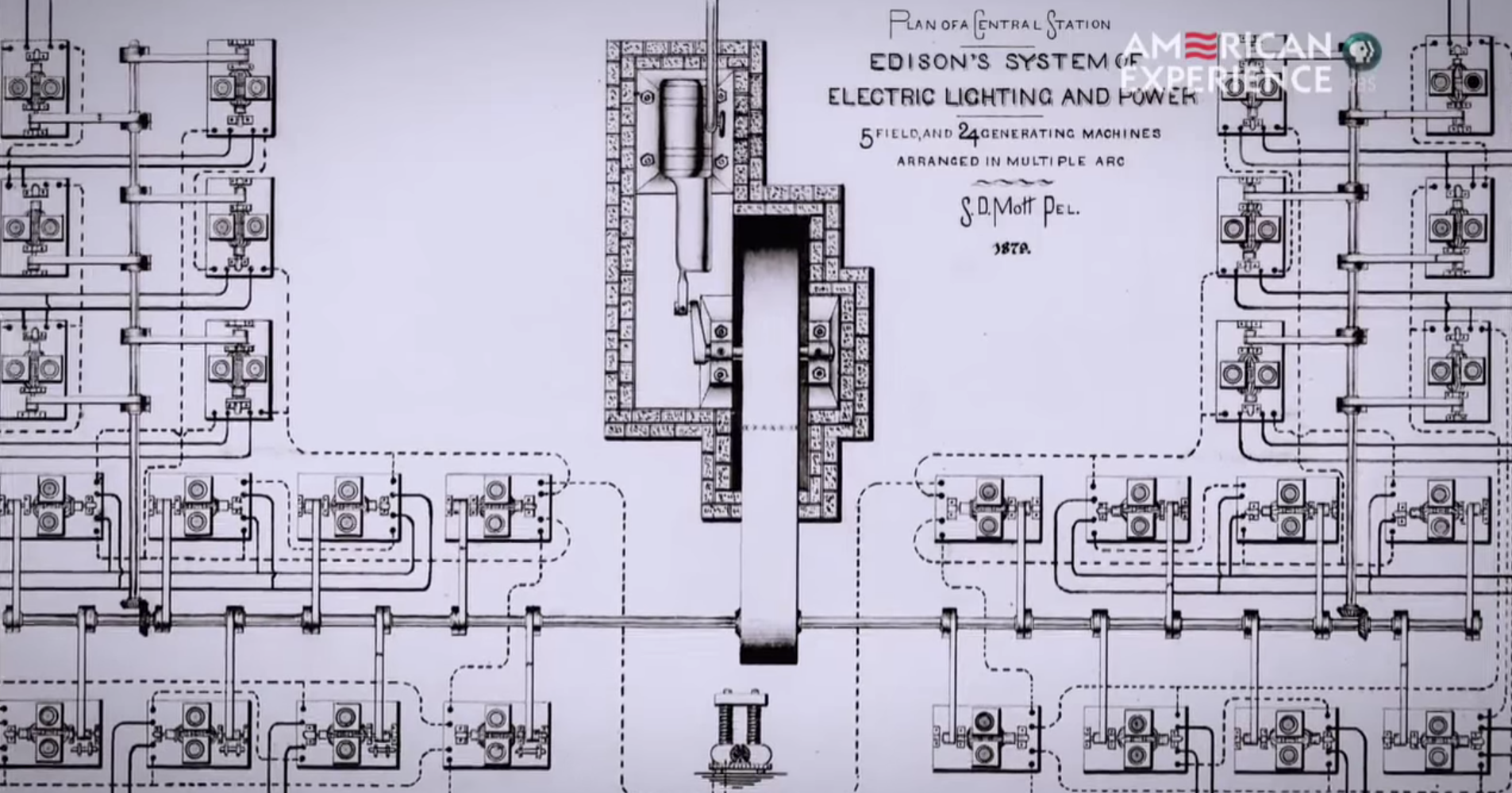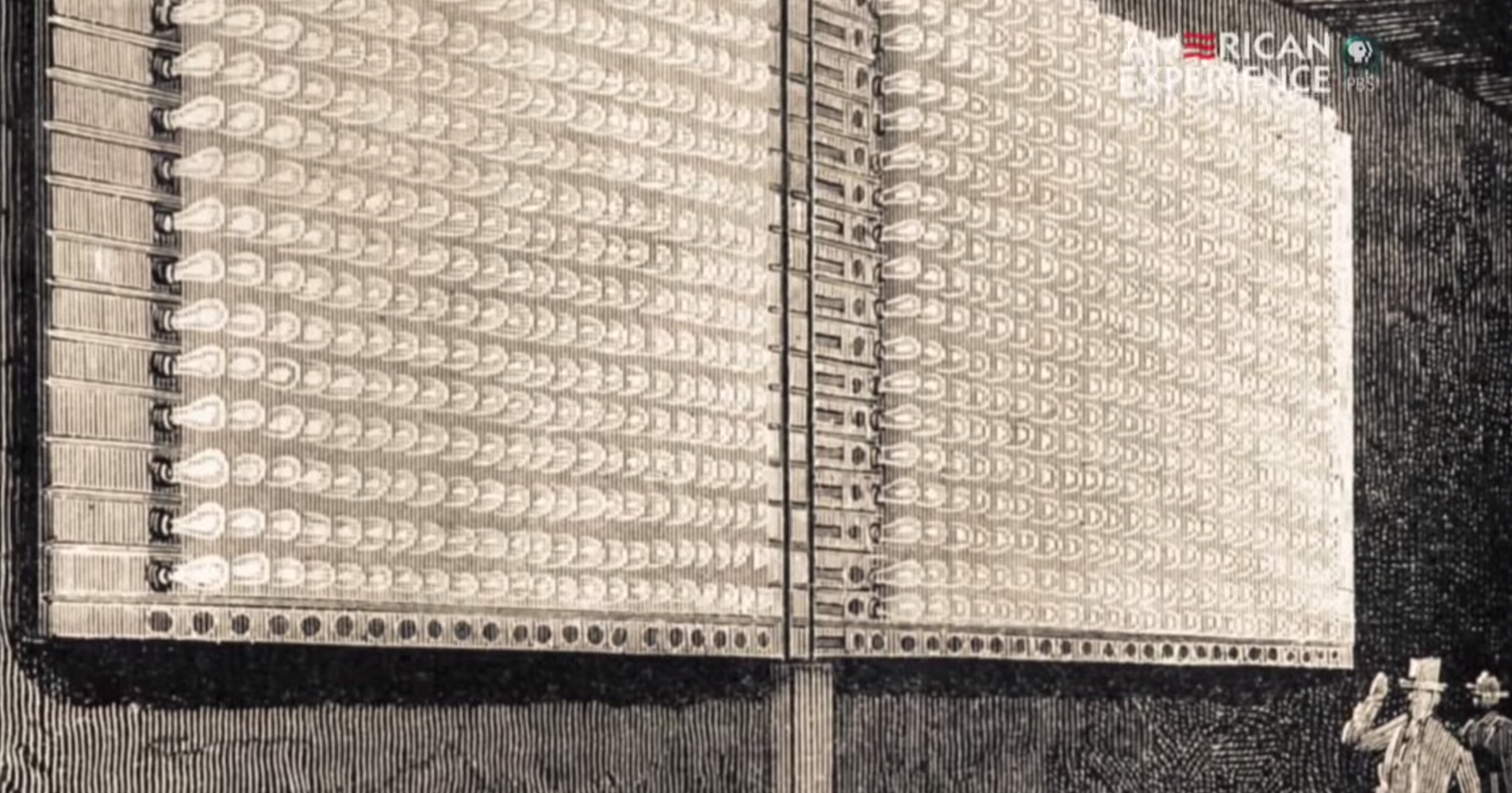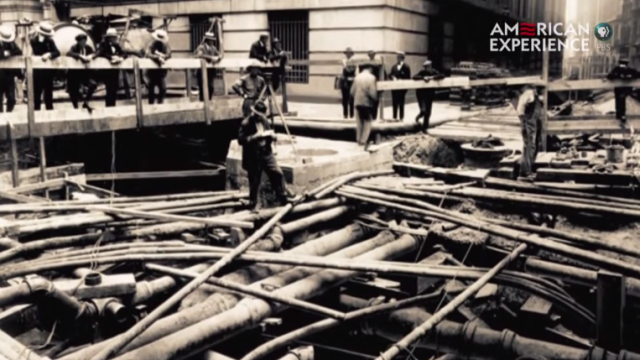Lower Manhattan of the 1880s was a wonderland of futuristic technology and engineering: The city’s first cable car arced over the harbour. A spindly new steel bridge was forming to connect Williamsburg to the city. And on the Lower East Side, Edison was tearing up the streets to build the first permanent power station in the world.
When we think about Edison’s role in illuminating our cities, we often think of him as the loser. In the so-called “War of Currents,” which pitted Edison’s direct current electricity against Westinghouse’s AC/DC alternating currents, Westinghouse would ultimately win out. But years before that would happen, Edison pulled off one of the most remarkable infrastructure projects in NYC history — and he did it on the Lower East Side, on a street you might unknowingly walk down today. Another thing you might not know about Edison’s system? Some of it was operational until 2007.

Screenshot of American Experience: Edison, via YouTube and Untapped Cities.
In a new two-hour documentary about the luminary called American Experience: Edison, premiering tomorrow on PBS, we get a closer look at the incredible project to light up a small patch of Manhattan thanks to clip uploaded by Untapped Cities.
In the late 1870s, Edison had claimed that he would light up the world with his incandescent lights. The first step in his plan to do so? Create what amounted to a square mile showroom on the Lower East Side: An electrical grid that supplied direct current to a chunk of the city thanks to energy generated inside a new power station at 257 Pearl Street. It would supply power to some of the most important businesses in the city, crucially, including the old New York Times building — smart, considering the paper would inevitably cover the mind-boggling development!

Screenshot of American Experience: Edison, via YouTube and Untapped Cities.
But Edison’s great illumination took far longer to bring about than he expected, and the project was plagued with challenges. “It was massive, all of the problems he had to solve,” says writer Jill Jonnes, author of Empires of Light: Edison, Tesla, Westinghouse, and the Race to Electrify the World, to PBS. For instance, Edison had to do the dirty work of actually convincing city officials to let him use the Lower East Side as a testing ground, which would require digging up long stretches of street to install 80,000 feet insulated copper wiring below the surface.
He also had to design all of the hardware that would go into his first power grid, including switchboards, lamps, and even the actual meters used to charge specific amounts to specific buildings. That included even the six massive steam-powered generators — each weighing 30 tons — which Edison had created to serve this unprecedented new grid, according to IEEE. As PBS explains, Edison was responsible for figuring out all sorts of operational details of the project — including a “bank of 1000 lamps for testing the system:”

Screenshot of American Experience: Edison, via YouTube and Untapped Cities.
But on the evening of September 4, 1882, the system finally cranked into gear. The New York Times did indeed report on the development within its own building, writing breathlessly the next day:
It was about 5 o’clock yesterday afternoon when the lights were put into operation. It was then broad daylight, and the lights looked dim. It was not till about 7 o’clock, when it began to grow dark, that the electric light really made itself known and showed how bright and steady it is.
“And according to Mr. Edison, they will go on forever unless stopped by an earthquake,” the reporter added. Well, an earthquake or the conceptual equivalent. It wouldn’t be long before Westinghouse’s AC/DC current — the brainchild of Tesla — would win out over Edison’s DC current.
But interestingly enough, the remnants of Edison’s Manhattan grid would endure for more than a century. The last bit of the direct current system was cut out of use in 2007, according to another NY Times story on the slow waning of Edison’s system. Fascinatingly, Edison’s electrical fingerprint remained the longest in the densest, busiest parts of the city, while alternating current hookups began in the outer boroughs and crept inwards, taking decades to replace the older direct current systems of Manhattan.
So next time you’re walking down Pearl Street, perhaps on your way to the TD Bank or Western Union that currently occupy the same stretch of street, keep in mind: NYC’s electrical birth once chugged away beneath your feet.
PBS sent us an exclusive clip from the documentary, so check it out below.
